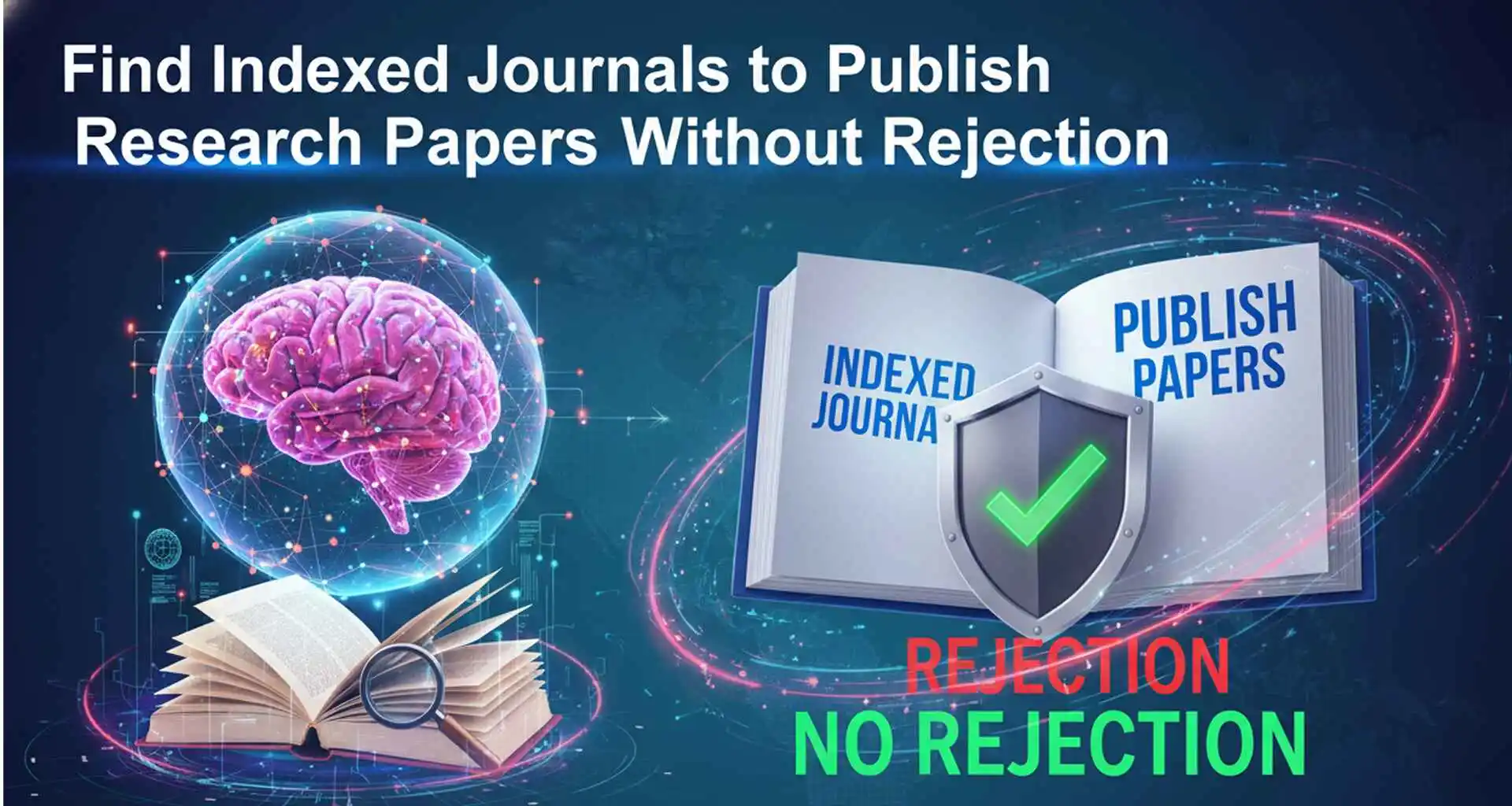
Kallen
Choosing the right journal to publish research paper is a defining step for any scholar. It transforms your findings into recognized contributions while strengthening your academic credibility. A well-published paper also connects you with the broader research community and expands your professional network and visibility.
This guide walks you through the essential stages—from preparing a well-structured manuscript to selecting the right indexed journal and handling reviewer comments effectively. Tailored for PhD students, independent researchers, and early-career authors, it offers practical insights to help you publish confidently and avoid common rejection traps. For more assistance with selecting and submitting to reputed journals, visit our journal publication service page.
The underlying fact is that not all journals are equal.Getting published in a recognized journal is not just putting your name on the paper, but it gets more citations, more profile, and generates confidence with the institutions and the funding organizations.
Think of indexed journals as the verified profiles of the research world. They project an impressive message of honesty. Scopus or Web of science is observed by universities and funders whenever a paper has been published. Your work does not vanish into nothingness but instead can be found, referenced and read by the peers that matter.
Therefore, Always remember: indexing isn’t just a badge, it’s your passport to global research visibility that indexing is not only a badge but also the passport that will enable your research to cross the world.
|
Database |
Field Coverage |
Why it Matters |
|
Scopus |
Multidisciplinary |
Global visibility; widely respected for citations |
|
Web of Science (WoS) |
Multidisciplinary, select journals |
Prestigious, used for academic assessments |
|
PubMed |
Biomedical & Life Sciences |
Must-have for health and life science research |
|
DOAJ |
Open Access Journals |
Ensures open-access legitimacy |
|
ERIC |
Education & Social Sciences |
Key for educational research |
The takeaway? Choose an index that aligns with your field, not just because it looks impressive on a website.
Here are the key steps to choose the best journal to publish research paper that aligns with your scope and institution’s requirements
Check institutional requirements: Most universities and funding agencies require that a journal needs to be registered in one of Scopus or Web of Science (WoS).
Match your subject area: Choose a journal, which publishes work in your field. As an illustration, a journal article on AI in Healthcare should not be uploaded to an ordinary journal in computer science.
Evaluate past articles: Browse recent issues. Find articles within your scope, methodology and depth.
Indexing & Editorial Transparency
Ethical Standards & Communication
Peer Review Process
Journal Metrics and Impact
Publication Fees & Transparency
Website Quality & Scope
Prior to searching, it is necessary to be clear with an objective.
Construct a list of important keywords and synonyms based around your paper topic.
Make sure you include broader terms (to use in databases) and terms that are narrower (to increase precision). For example, if your topic is on "AI applications in healthcare" some example keywords could be: artificial intelligence, machine learning, healthcare technology, clinical decision support.
Not all search engines are created equal.. Some are specialized, some general. Together, they supply the first-rate perspective.
Start with general search engines, then move to specialized databases.
Google Scholar: quick, simple, fantastic for a rapid sweep. Use "cited by" and "related articles" hyperlinks to discover influential journals.
Semantic Scholar: AI-based search aids in surfacing papers by way of relevance, quotation patterns, and influential authors.
After you get a basic idea from general search engines, move on to specialized databases that match your field of study. These help you find trusted and indexed journals more easily.
Scopus: Covers subjects in science, social science, and humanities. You can check if a journal is indexed and view details like citation numbers and journal rankings.
Web of Science (WoS): Useful for finding high-quality, peer-reviewed journals.
Look for journals listed under:
SCI (Science Citation Index) – for science and technology.
SSCI (Social Science Citation Index) – for social science research.
ESCI (Emerging Sources Citation Index) – for new but reliable journals.
PubMed: Best for medical and life science research. Check if the journal is MEDLINE-indexed to be sure it meets high-quality standards.
IEEE Xplore: Ideal for engineering, computer, and technology topics. It gives access to journals and conference papers published by IEEE, known worldwide for technical research.
After obtaining your initial search results, the next step is to conduct filtering to ensure you are only targeting established and credible journals.
Scopus: You can filter results by "source title" and look at the indexing status.
Web of Science: You can look for SCI, SSCI, or ESCI in the journal profile.
PubMed: If you are in a biomedical-related field, check if the journal is MEDLINE-indexed.
We’ve now turned to examine the journal itself, so this means don’t only look at the title.
Recent Articles: Look at articles that have been published over the last 1-2 years. Do the topics and methods reflect yours?
Research Approaches: Does the journal publish articles that are applied, theoretical, or case study?
Authors and Institutions: If the current leaders in the field are frequently published accounts here, then this journal is likely a good fit.
Article Quality: Are the articles well-cited? This is indicative of the journal's quality.
When selecting a journal to publish research paper, academic metrics like Impact Factor, CiteScore, or SJR are practical tools, not just numbers
Knowing how to use these metrics enables you to make informed, strategic choices of journals that strike a balance of prestige, pertinence, and timeliness of publication.
Measures the scientific impact of journals according to the number of citations received and the relative prestige of the citing journals.
SJR reflects how influential and widely cited a journal is within its discipline. and cited by highly influential journals, yet it might not always correspond to specialized research.
Practical tip: Use SJR to compare journals in your field and not across disciplines because citation standards differ highly.
Adjusts citation influence compared to the average in a given field, making it more equitable for journal comparisons across fields.
Example: A 1.5 SNIP in social sciences could be indicative of significant influence, while the same value in life sciences might be moderate.
Practical tip: Consider SNIP if your research is inter-disciplinary, it serves to pinpoint journals that will provide your work with equitable visibility compared to field norms.
Monitors the average citation number per paper published in the journal in the last two years.
High IF journals can be top-tier, but have high competition and longer review times.
Working tip: Don’t chase Impact Factor blindly—alignment matters more than numbers. A highly cited journal in the wrong subfield can lead to desk rejection.
Scopus metric akin to IF but comprising a wider scope of documents (articles, reviews, conference papers).
Gives an extensive overview of a journal's overall citation performance.
Tip: Utilize CiteScore in order to estimate the frequency with which journals publish material analogous to your research and to establish the frequency at which it is cited.
Before finalizing a journal to publish research paper, ensure it’s genuinely indexed and not just claiming to be. Being indexed by a journal does not necessarily mean it is authentic. Because many predatory journals falsely claim to be indexed in Scopus or WoS. Valid verification guarantees that your research is findable, trustworthy, and reputable.
Every authentic journal has an ISSN (International Standard Serial Number). Use professional ISSN portals to verify registration.
Example: Go to https://portal.issn.org/ and enter the journal identity or ISSN to validate authenticity.
Directly search for the journal in Scopus, Web of Science, PubMed, or your field-specific databases.
Ensure the journal is actively listed and current articles are included.
Review the publisher’s website for archived issues. Look for steady book dates, entire volumes, and reachable previous articles.
Check if preceding articles meet first-rate requirements and are desirable cited.
Getting your manuscript accepted isn’t just about writing a good paper—it’s about strategic alignment. Editors and reviewers instantly check if your study fits the journal’s aims and scope, so this step is non-negotiable.
Make your title explicitly state the subject matter and extent. Abstracts should include problem statements, methodology, results, and significance in a concise and engaging way. Keywords should be broad search terms in your discipline to boost discoverability.
Your cover letter is your elevator speech. Tell how your paper fulfills the mission of the journal and why your work interests its readers. Avoid hackneyed phrases—be specific.
Journals are looking for new work. Emphasize new contributions, report data clearly, and provide methods so other researchers can replicate your study.
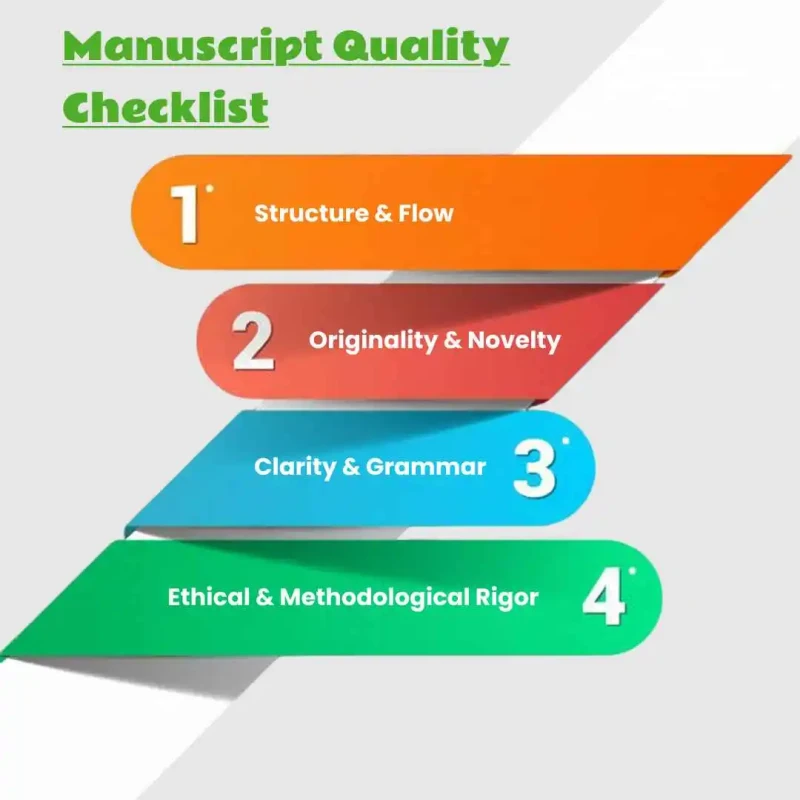
An edited manuscript greatly reduces the chances of desk rejection. Sloppily written or poorly submitted work is caught by editors even before peer review.
Structure & Flow: Reasonable well-structured sections (Introduction → Methods → Results → Discussion → Conclusion) make your work easy to understand for reviewers. Use headings/subheadings to make it easier to read.
Originality & Novelty: Clearly explain what is original or new in your research. Contrast with prior research and state how your results contribute to the field.
Clarity & Grammar: Inadequate grammar or untidy formatting can hinder reviewers. Results should be explained using tables, figures, and charts clearly without vagueness.
Ethical & Methodological Rigor: Report adherence to ethics openly, report method in full detail, and state limitations. Trust is achieved by transparency.
Many submissions fail simply because authors ignore basic journal guidelines.
Journal Templates: Most journals provide templates—use them. Ignoring them looks slack and could lead to desk rejection.
Citation & Reference Style: Ensure citations and references are in the style that the journal prefers (APA, MLA, Vancouver, etc.). Zotero or EndNote help.
File Naming Conventions: Consistent file naming helps editors manage revisions efficiently. Employ descriptive, informative filing of filenames (e.g., "Smith_2025_Manuscript.docx"). Avoid generic names such as "Final.docx".
Supplementary Material: Only provide what is requested; too much irrelevant material can confuse reviewers.
Data Availability & Conflicts of Interest: Document datasets, funding, and any potential conflicts—transparency avoids future ethics issues.
Understanding common pitfalls saves months of delay. Rejection doesn’t always replicate bad research—it frequently indicators misalignment, presentation issues, or preventable oversights.
Journals prioritize research with robust, replicable methods. Clearly outline your research design, sample, variables, and analytical techniques.
Emphasize your special contribution: Does your study fill a gap, test a new idea, or offer a fresh approach?
Conduct a thorough literature review, inclusive of current research and foundational works.
Avoid citing difficult to understand or inappropriate sources, as this can weaken the perceived rigor of your work.
Always make certain your manuscript suits the journal’s stated aims. Even excellent research can be rejected if it falls behind the goal target audience or thematic focus.
Consider it the "first date" before you officially commit to sending in your manuscript. You're essentially gauging compatibility.
You send a pre-submission inquiry to:
Ensure journal fit: Ensure your scope and subject match the interests of the journal.
Assess novelty or importance: Check whether your contribution is something new to the field.
Time-saving: Spare yourself months of sitting around for a "desk reject."
Clear up confusion: Inquire whether special issues, formats, or data policies are relevant to your subject.
Before submission: To confirm scope or fit
After long silence (6–8 weeks): To politely check on status
When scope is fuzzy: If your study crosses disciplines
For special issues: To confirm deadlines or eligibility
Never email multiple editors at once. One journal. One editor. One clean message.
Subject: Pre-submission inquiry: [Preliminary Paper Title]
Dear Dr. [Editor's Last Name],
I hope you are doing well. I am working on a manuscript entitled "[Your Title]", which examines [brief 1–2 line overview of your study topic].
Prior to formal submission, I wanted to inquire if this work would be an appropriate match for [Journal Name].
Below, you will find the abstract for your information:
[Paste brief abstract 150–200 words]
Thank you for your time and attention. I eagerly await your advice.
Warm regards,
[Your Full Name]
[Your Institution]
[Your Contact Email]

Common Email Mistakes When Contacting Editors:
Writing a novel: Keep it under 200 words. Editors don’t have time for your life story.
Sounding desperate: Never say “I hope you’ll accept my paper” you’re asking for suitability, not approval.
Copy-pasting mass emails: Personalize it. Mention the journal by name, maybe reference a recent paper or theme they published.
Over-attaching: Only attach the abstract when reaching out, don’t include drafts, figures, or any extra files “just in case.” Keep it simple and professional
Disregard tone: Be respectful but assertive. Editors respect writers who respect their time.
Publishing is more than simply putting your work out there, it's deciding where it's going to live and how the public is going to find it. Choosing the right journal publishing model can boost your visibility, shape your citations, and save your bottom line. Let's dissect the three primary publishing models that every researcher should know.
Your article is accessible to everyone no paywalls, no institutional login. The caveat? Authors typically pay an Article Processing Charge (APC) to make it open access.
Example: PLOS ONE, BMC journals, Scientific Reports
A combination of both. Readers usually have to subscribe, but writers can opt to pay for their own article to be open access.
Example: Most Elsevier and Springer journals
The old model. Readers pay (or institutions do it for them). Authors don't usually pay any author fees.
Example: Nature, Cell, The Lancet (old-fashioned issues)
Indexing is more influenced by journal prestige and publisher credibility than access type — but access does affect visibility and citations.
Open Access:
Typically indexed quicker and referenced more since everyone can access it. Most typically found in DOAJ, Scopus, PubMed Central, and Google Scholar.
Hybrid Journals:
Typically well-indexed since most are owned by large publishers (Springer, Elsevier, Wiley). Their OA articles still receive wider visibility.
Subscription Journals:
Typically set up and well-established in databases such as Web of Science and Scopus. Restricted to scholarly readers with paywalls.
Early-Career Researchers:
Go Open Access (in reputable journals). You’ll boost visibility, citations, and collaborations early. Just verify indexing and avoid shady publishers.
Mid-Career Academics:
Hybrid journals are your sweet spot of high credibility, optional open access if your budget or institution supports it.
Senior Researchers:
Subscription journals remain to possess heavyweight prestige, particularly in conventional disciplines or for tenure portfolios.
Elsevier Journal Finder, Springer Journal Suggester, IEEE Publication Recommender, and Wiley Journal Finder are tools that can search through your title, abstract, and keywords to suggest appropriate journals. It's like using matchmaking websites for your manuscript.
Use technical, field-specific vocabulary from your paper's title and abstract. Don't use buzzwords or overly broad terms. Instead of "machine learning," for instance, say "deep learning for medical diagnostics." The more specific, the better the matchmaking accuracy of the algorithm.
They're algorithmic guessers, not academic gatekeepers. One tool may recommend a journal with a great "match score" but terrible indexing, APCs that are too high, or shady ethics.
Index checking (Scopus, Web of Science, DOAJ).
Legitimacy check on COPE or Think.Check.Submit.
Scan a few recent papers to evaluate scope and tone.
Check APC information and copyright policy.
Academic publishing isn’t always fair play; some journals follow the rules, others fake it. Protect your work by spotting ethical and legal red flags before you get burned.
Simultaneous submission to multiple journals is academic suicide. Use plagiarism detection tools such as iThenticate or Turnitin prior to submission.
Each author on the paper should have contributed significantly. Don't have "gift authorship" or leave off important collaborators both are COPE offenses.
Be cautious of journals that boast with false impact factors or unsubstantiated claims of indexing. If they boast but can't prove it, flee.
Always check the journal's compliance with COPE (Committee on Publication Ethics). Ethical journals readily show off their membership.
Peer review isn’t confrontation—it’s collaboration that strengthens your work.. How you handle it often decides whether your paper gets accepted or sent back for another round.
Reviewers consider novelty, clarity, and methodological quality. They expect openness, good English, and good citation hygiene.
Reply to all comments respectfully even if you don't agree. Use a simple table structure: Reviewer Comment | Author Response | Action Taken.
Be humble but firm. Support your decisions with facts, not ego. Reviewers prefer logic to defensiveness.
Only appeal if the rejection is based on factual or editorial mistake not ego. Offer fresh information or clarifications, not grievances.
Rejection isn’t the end of your research journey, it's part of the terrain. Every published scholar has been there. What matters is how you bounce back and refine your work for the next shot.
Leave ego aside and use the feedback as free consulting. Look for repeated criticisms—they indicate actual vulnerabilities.
Edit your manuscript carefully prior to the next submission. At times, another journal scope is a better fit.
Large publishers such as Elsevier or Springer Nature provide "journal transfer" possibilities to appropriate sister journals. Utilize them—it saves time and maintains your submission record.
Follow each submission, decision, and feedback milestone. This "publishing diary" assists you in changing strategically.
Authoring smart involves knowing where to find it, who to believe, and how to refine your work before submitting. Your quick-access toolkit for credibility and clarity is here:
Check your journal's visibility and credibility using reputable indexing databases:
Scopus – Full coverage of peer-reviewed literature.
Web of Science – Cite-tracking gold standard.
DOAJ (Directory of Open Access Journals) – Ensures valid open-access journals.
PubMed / PubMed Central – For life science and biomedical papers.
Google Scholar – Fast visibility check for citations and access.
Before you submit, check that your target journal:
Is indexed in Scopus, Web of Science, or DOAJ.
Has a valid ISSN and open editorial board.
Shows COPE membership or ethical publishing policy.
Publishes clear APCs and refrains from unclear or suspicious charges.
Features a working website (no broken links or missing policies).
Keep your words keen and unique:
iThenticate or Turnitin – For professional plagiarism review.
Grammarly Premium – For instant grammar, clarity, and tone.
Hemingway Editor – Clarifies and fortifies readability.
LanguageTool – Great multilingual grammar editor.
Getting published is only half the game.What you do after that determines how far your research travels. Promotion isn’t bragging; it’s academic amplification. Let’s make sure your paper doesn’t collect digital dust.
Make sure your paper is live in indexing databases. Mistakes occur—sometimes your paper is gone for months.
Mirror your ORCID profile and institutional repository to monitor citations and meet funder requirements.
Meet people where they already scroll. Share visual abstracts, summaries, and links with hashtags that make your community take notice.
Writing is merely half the battle with publishing; it takes strategy, ethics, and determination to choose the right journal to publish a research paper.
Recap checklist:
Select your access model depending on goals and budget.
Check journals manually, not by blind trust.
Uphold publication ethics always.
Reply to reviewers with dignity and transparency.
Sell your published work mercilessly.
Before you press "submit," double-check the authenticity of your target journal, edit your manuscript to perfection, and if in doubt ask an expert services or a mentor.Your research deserves to be published in a credible, indexed journal that reflects its true value
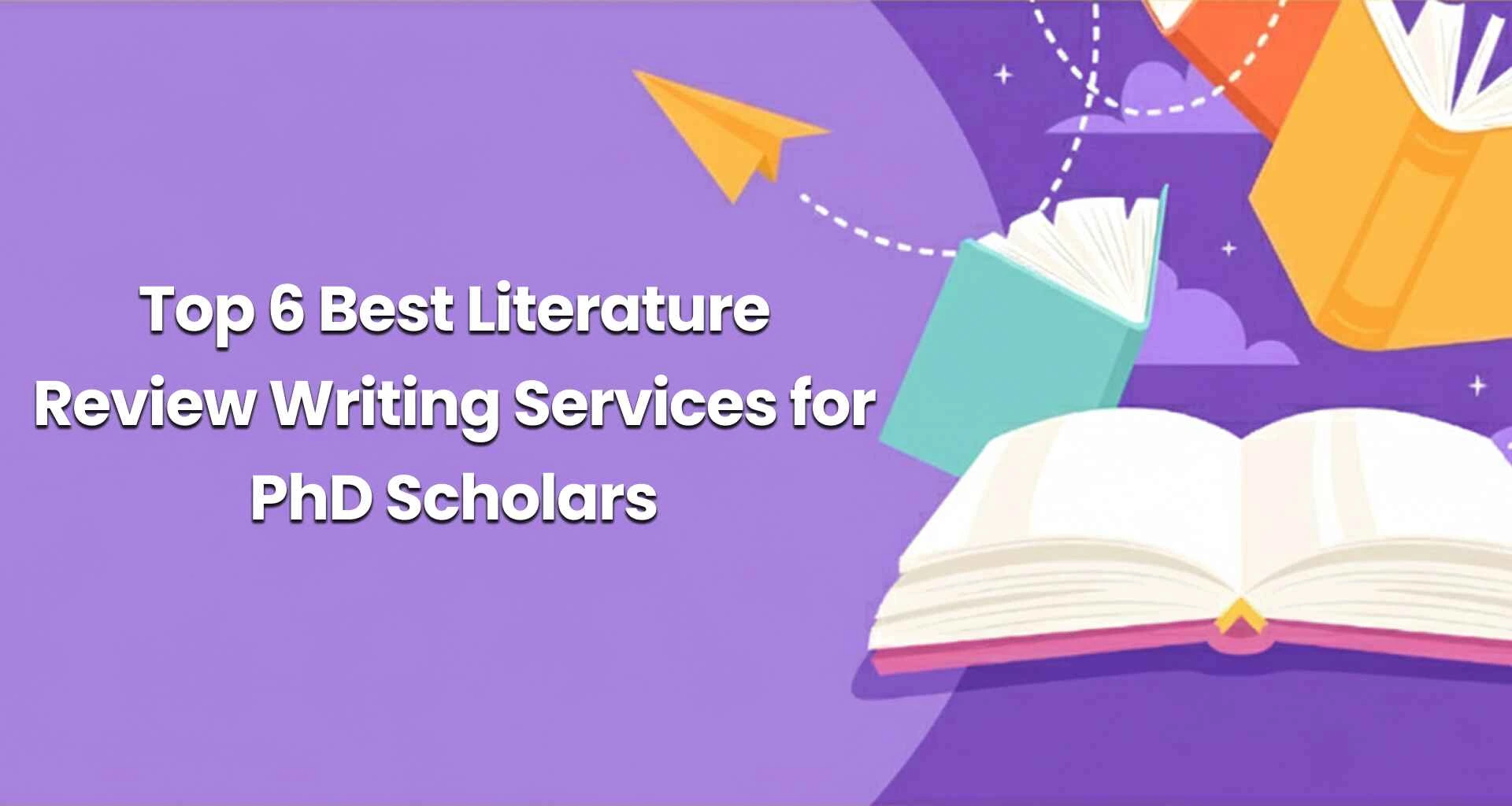
Top 5 Best Literature Review Writing Service for PhD Scholars
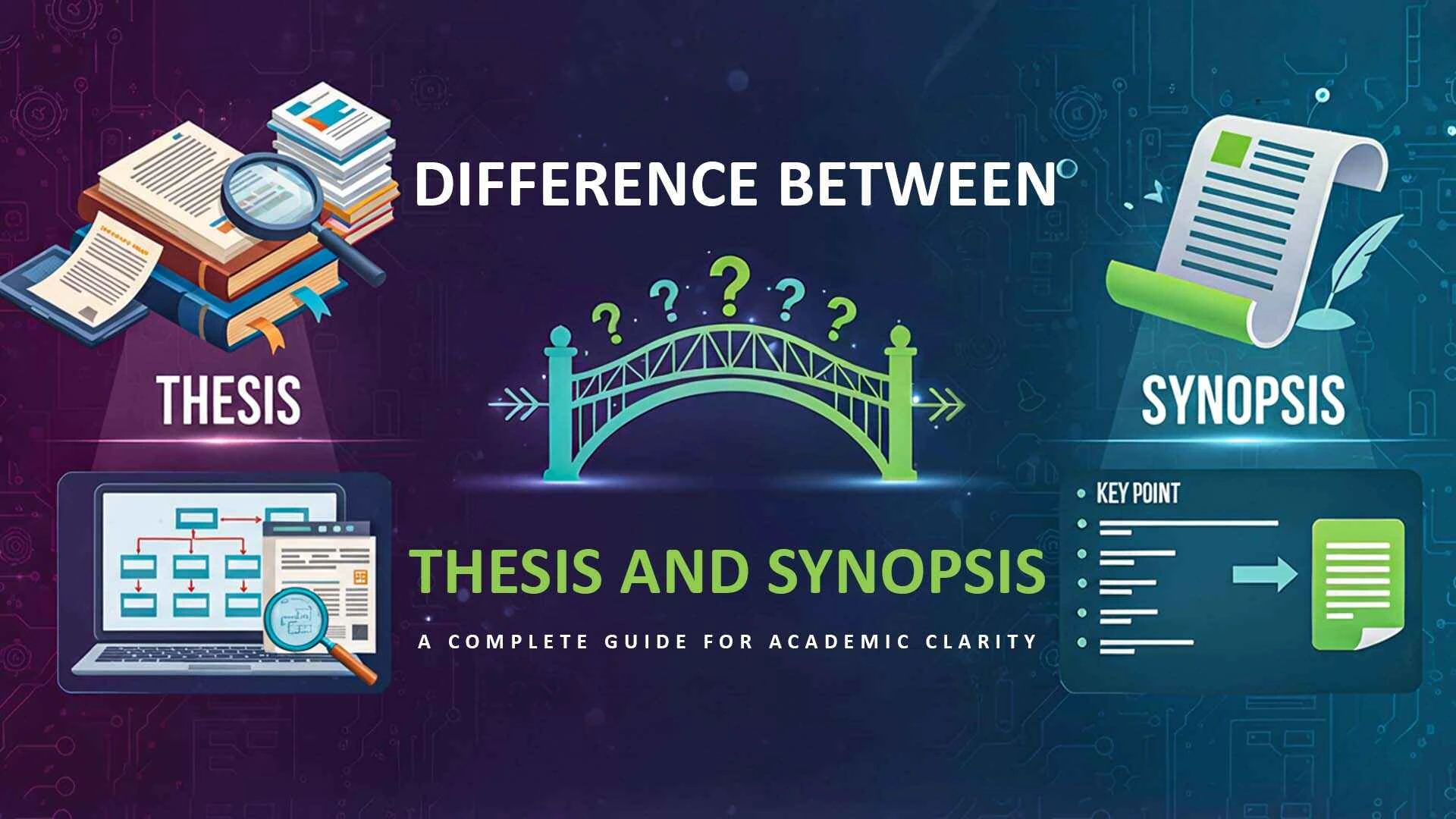
Difference Between Thesis and Synopsis: A Complete Guide for Academic Clarity

Types of Literature Review Comprehensive Guide for Scholars
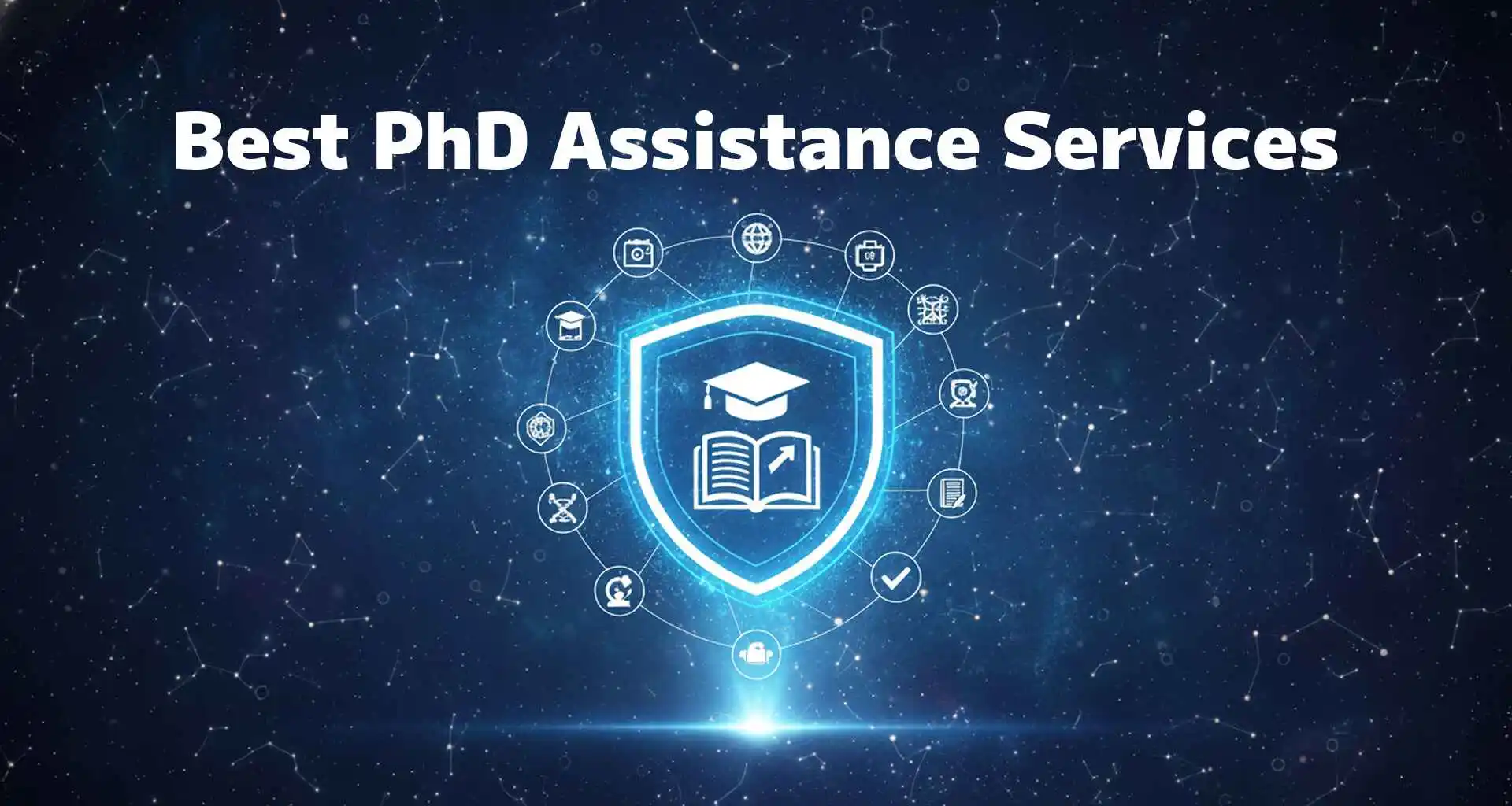
Best PhD Assistance Services
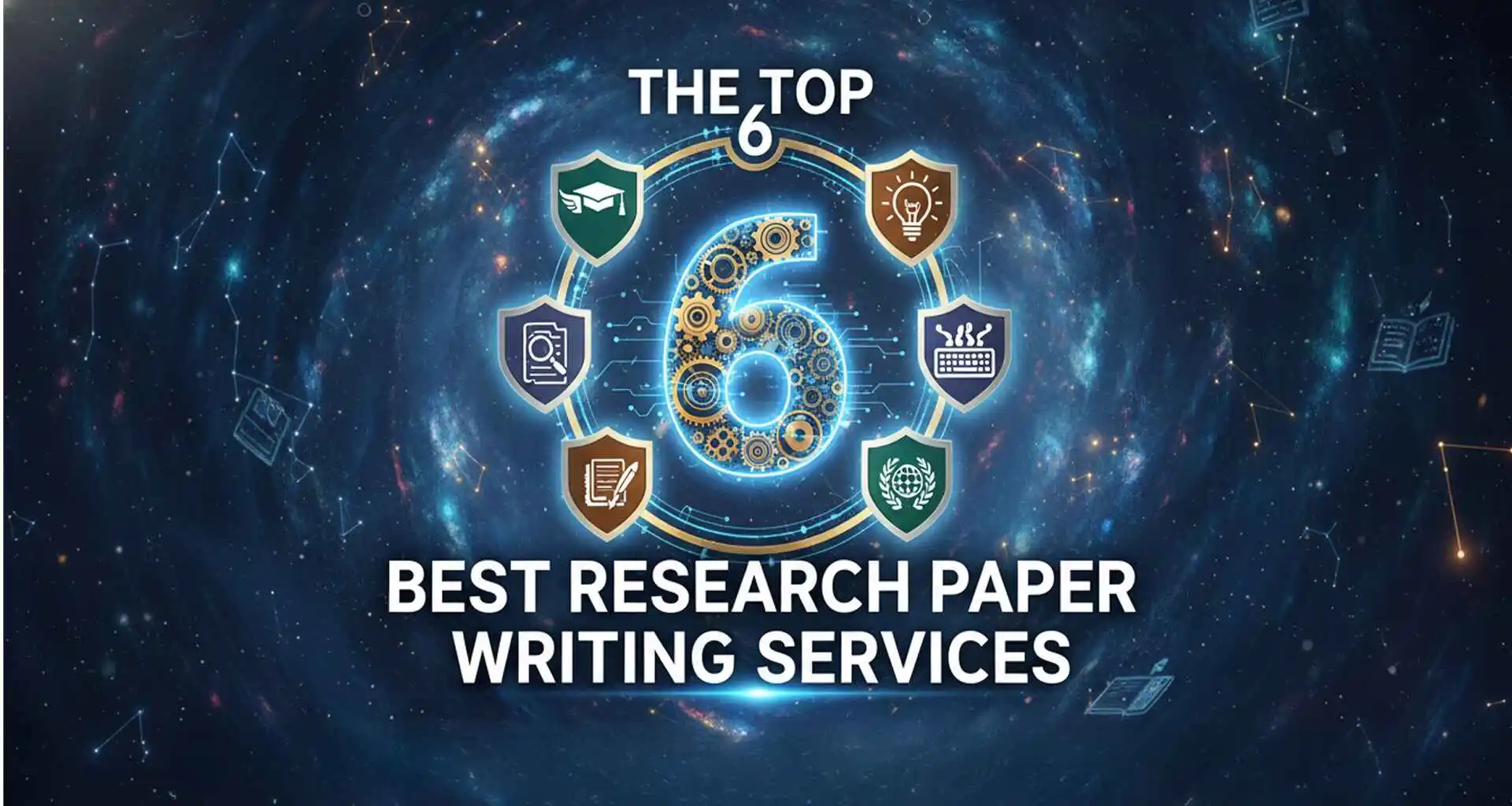
The Top 6 Best Research Paper Writing Services